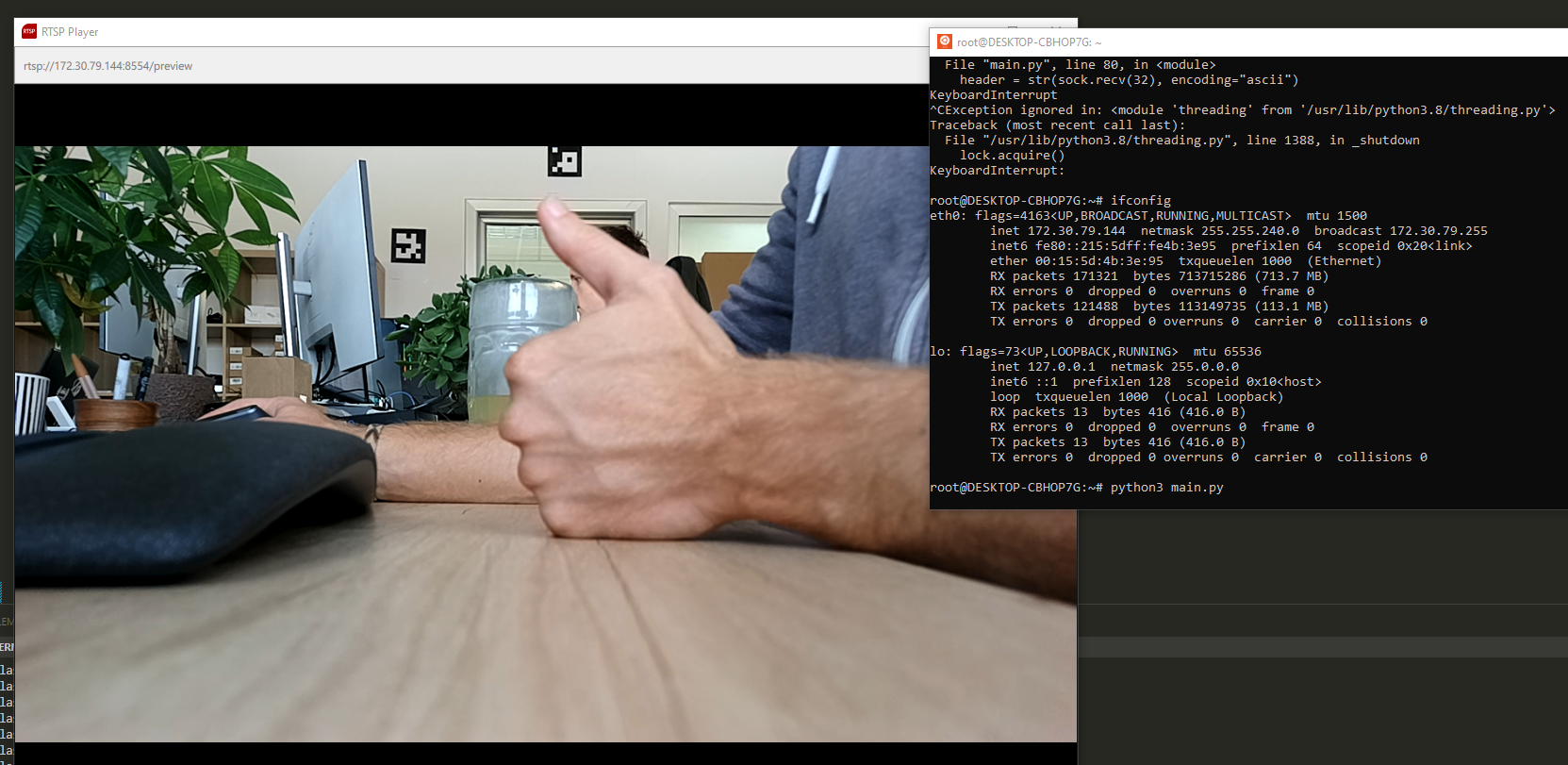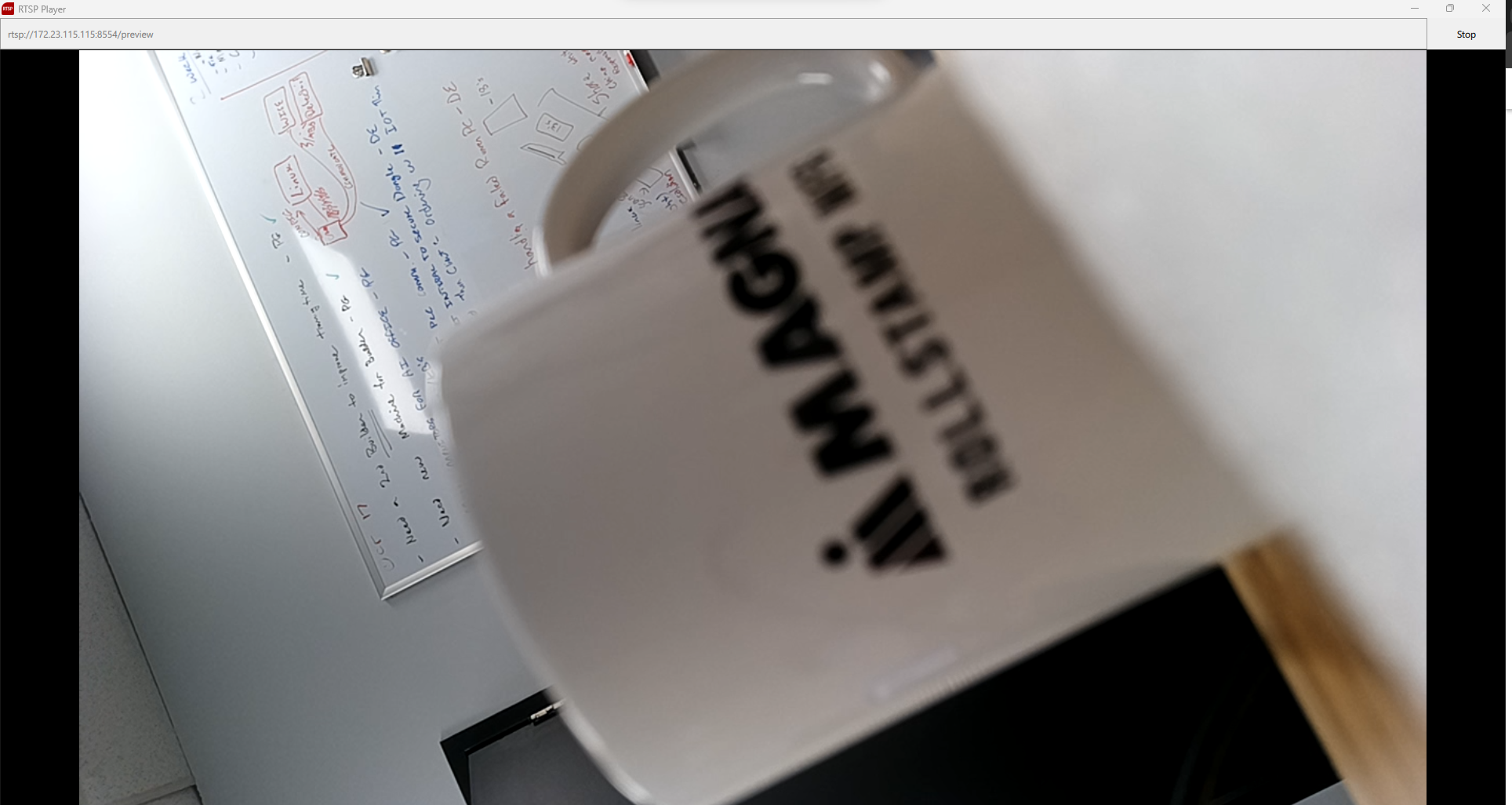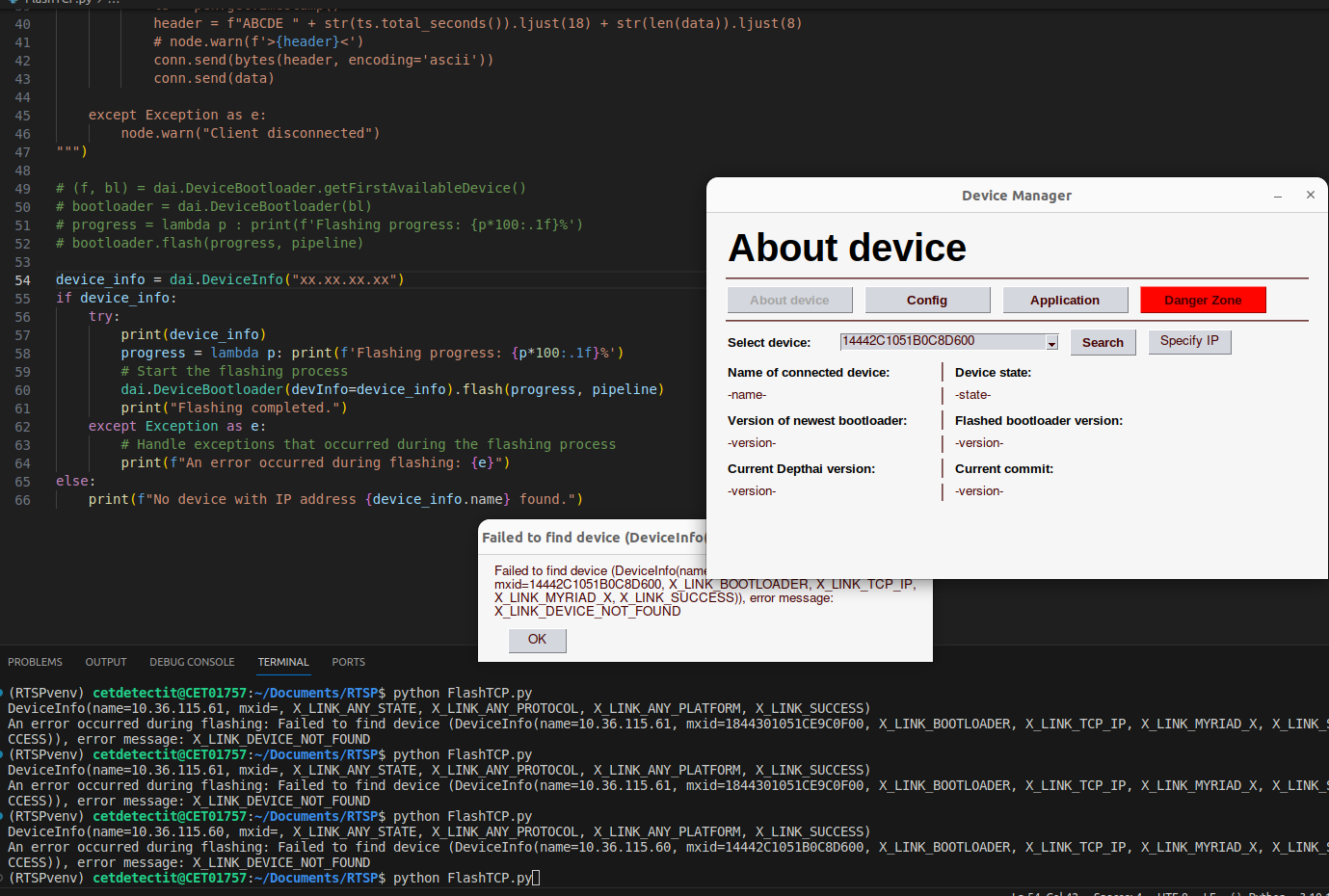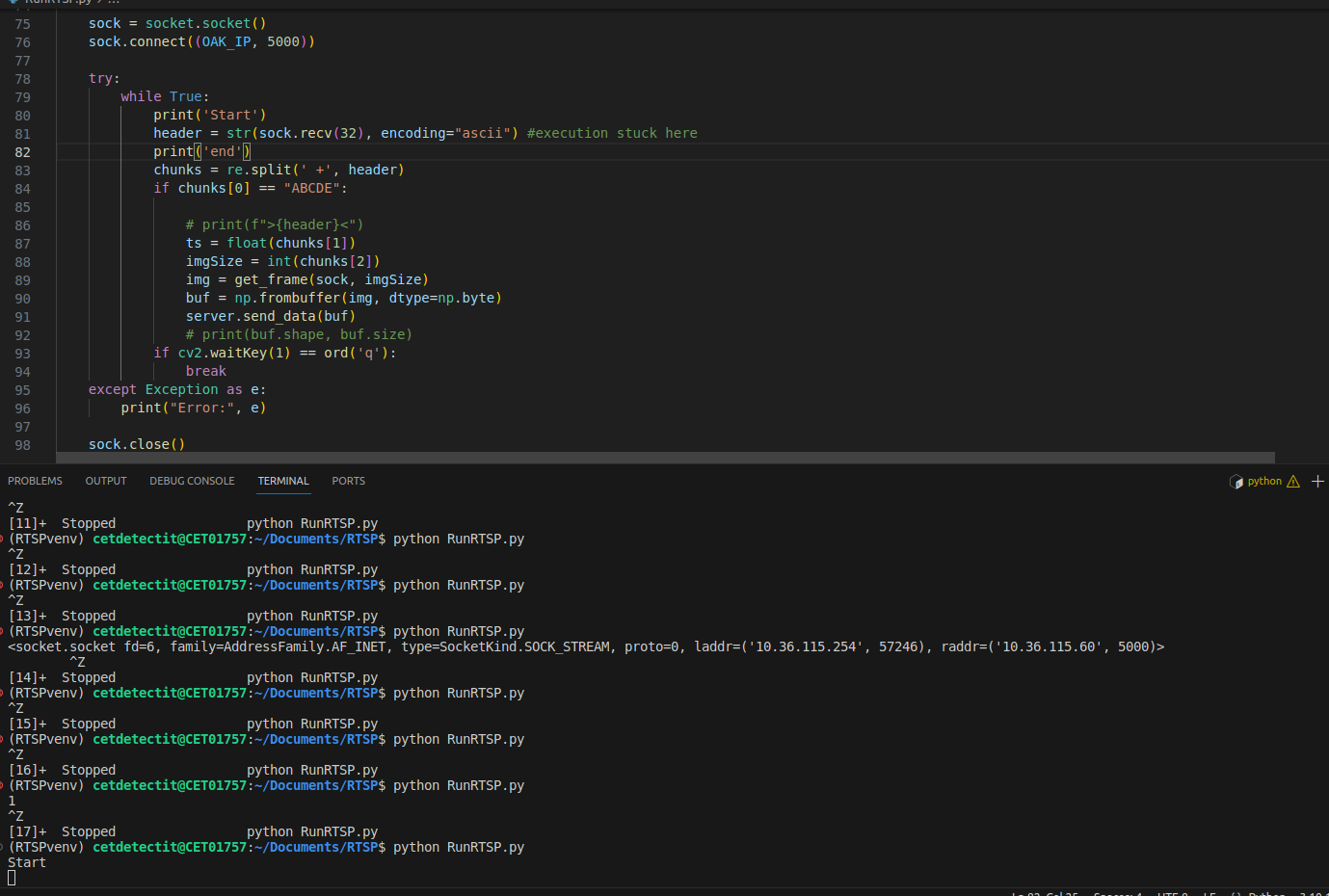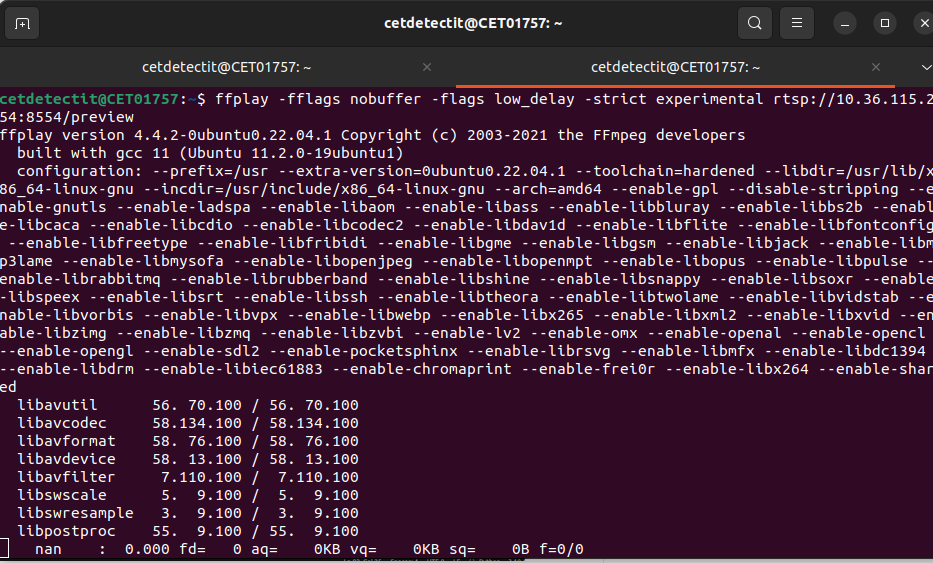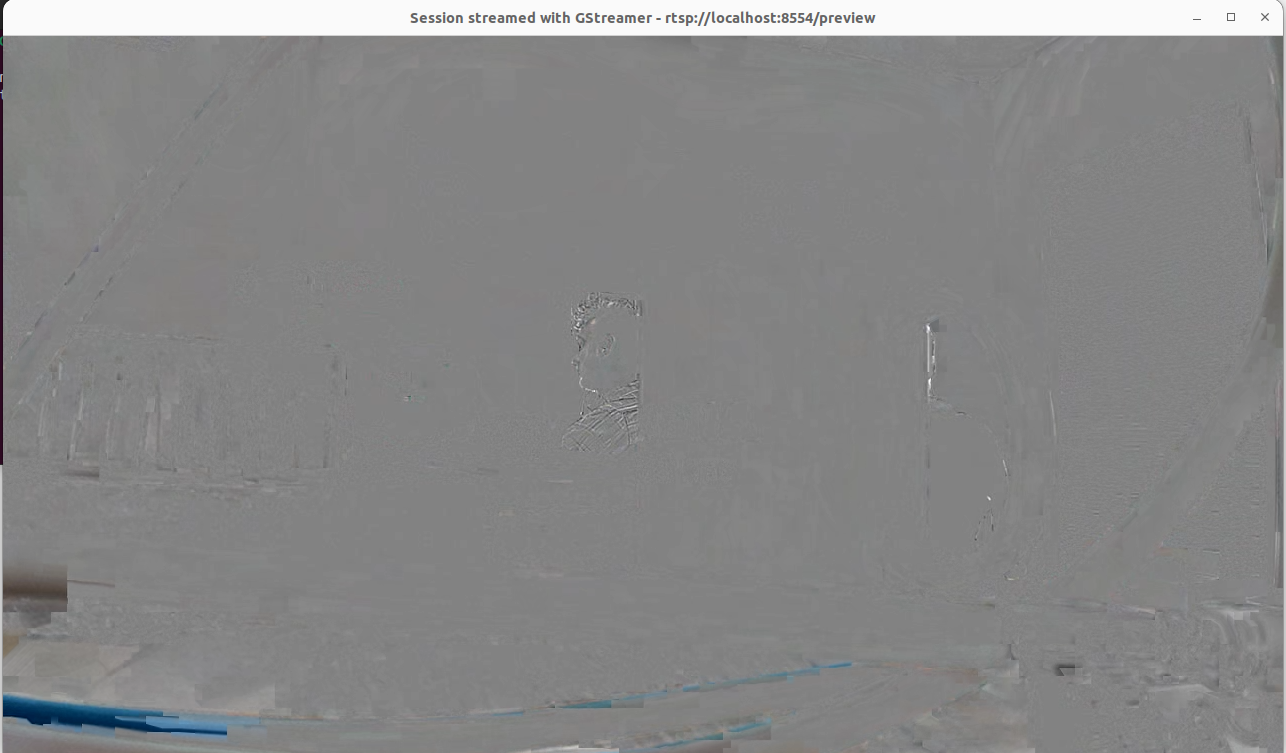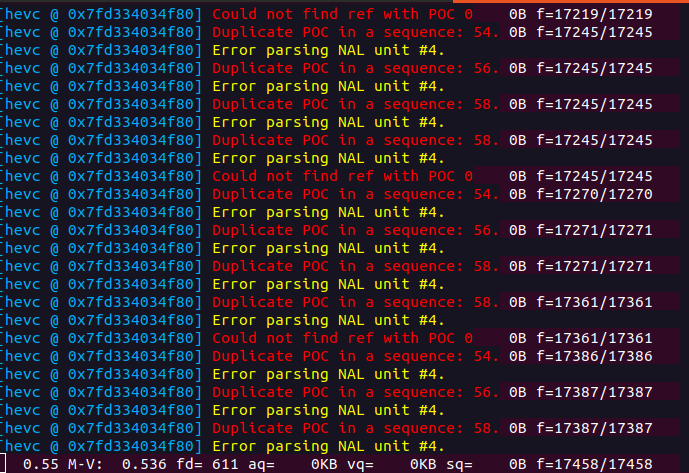- Edited
Hi @nikul ,
Here's step by step tutorial:
- Install WLS 2
- RUn commands
sudo apt-get update sudo apt-get upgrade sudo apt-get install ffmpeg gstreamer-1.0 gir1.2-gst-rtsp-server-1.0 libgirepository1.0-dev gstreamer1.0-plugins-bad gstreamer1.0-plugins-good gstreamer1.0-plugins-base - Install python requirements
opencv-python numpy depthai==2.24 PyGObject - I went with standalone approach, so flashing TCP server streaming H265 bitstream to clients that connect to it. You can run this flashing script from Windows (no need for WSL). Note that you need latest bootlaoder flashed on device before flashing this script to the OAK POE camera:
import depthai as dai # Start defining a pipeline pipeline = dai.Pipeline() camRgb = pipeline.createColorCamera() camRgb.setIspScale(2,3) videoEnc = pipeline.create(dai.node.VideoEncoder) videoEnc.setDefaultProfilePreset(30, dai.VideoEncoderProperties.Profile.H265_MAIN) camRgb.video.link(videoEnc.input) script = pipeline.create(dai.node.Script) script.setProcessor(dai.ProcessorType.LEON_CSS) videoEnc.bitstream.link(script.inputs['frame']) script.inputs['frame'].setBlocking(False) script.inputs['frame'].setQueueSize(1) script.setScript(""" import socket import time server = socket.socket(socket.AF_INET, socket.SOCK_STREAM) server.bind(("0.0.0.0", 5000)) server.listen() node.warn("Server up") while True: conn, client = server.accept() node.warn(f"Connected to client IP: {client}") try: while True: pck = node.io["frame"].get() data = pck.getData() ts = pck.getTimestamp() header = f"ABCDE " + str(ts.total_seconds()).ljust(18) + str(len(data)).ljust(8) # node.warn(f'>{header}<') conn.send(bytes(header, encoding='ascii')) conn.send(data) except Exception as e: node.warn("Client disconnected") """) (f, bl) = dai.DeviceBootloader.getFirstAvailableDevice() bootloader = dai.DeviceBootloader(bl) progress = lambda p : print(f'Flashing progress: {p*100:.1f}%') bootloader.flash(progress, pipeline) - Find IP of your camera that's running the TCP server (I just used device manager), then run this script within the WLS2:
#!/usr/bin/env python3 import threading import gi gi.require_version('Gst', '1.0') gi.require_version('GstRtspServer', '1.0') from gi.repository import Gst, GstRtspServer, GLib import socket import re import cv2 import numpy as np # Enter your own IP! OAK_IP = "192.168.0.102" class RtspSystem(GstRtspServer.RTSPMediaFactory): def __init__(self, **properties): super(RtspSystem, self).__init__(**properties) self.data = None self.launch_string = 'appsrc name=source is-live=true block=true format=GST_FORMAT_TIME ! h265parse ! rtph265pay name=pay0 config-interval=1 name=pay0 pt=96' def send_data(self, data): self.data = data def start(self): t = threading.Thread(target=self._thread_rtsp) t.start() def _thread_rtsp(self): loop = GLib.MainLoop() loop.run() def on_need_data(self, src, length): if self.data is not None: retval = src.emit('push-buffer', Gst.Buffer.new_wrapped(self.data.tobytes())) if retval != Gst.FlowReturn.OK: print(retval) def do_create_element(self, url): return Gst.parse_launch(self.launch_string) def do_configure(self, rtsp_media): self.number_frames = 0 appsrc = rtsp_media.get_element().get_child_by_name('source') appsrc.connect('need-data', self.on_need_data) class RTSPServer(GstRtspServer.RTSPServer): def __init__(self, **properties): super(RTSPServer, self).__init__(**properties) self.rtsp = RtspSystem() self.rtsp.set_shared(True) self.get_mount_points().add_factory("/preview", self.rtsp) self.attach(None) Gst.init(None) self.rtsp.start() def send_data(self, data): self.rtsp.send_data(data) def get_frame(socket, size): bytes = socket.recv(4096) while True: read = 4096 if size-len(bytes) < read: read = size-len(bytes) bytes += socket.recv(read) if size == len(bytes): return bytes if __name__ == "__main__": server = RTSPServer() sock = socket.socket() sock.connect((OAK_IP, 5000)) try: while True: header = str(sock.recv(32), encoding="ascii") chunks = re.split(' +', header) if chunks[0] == "ABCDE": # print(f">{header}<") ts = float(chunks[1]) imgSize = int(chunks[2]) img = get_frame(sock, imgSize) buf = np.frombuffer(img, dtype=np.byte) server.send_data(buf) # print(buf.shape, buf.size) if cv2.waitKey(1) == ord('q'): break except Exception as e: print("Error:", e) sock.close() - Find IP of your WLS2 (ifconfig) which is now running RTSP server
- ???
7.1 Profit! - I used RTSP PLayer on Windows to verify that my RTSP (on WLS2) works as expected. Img below.
